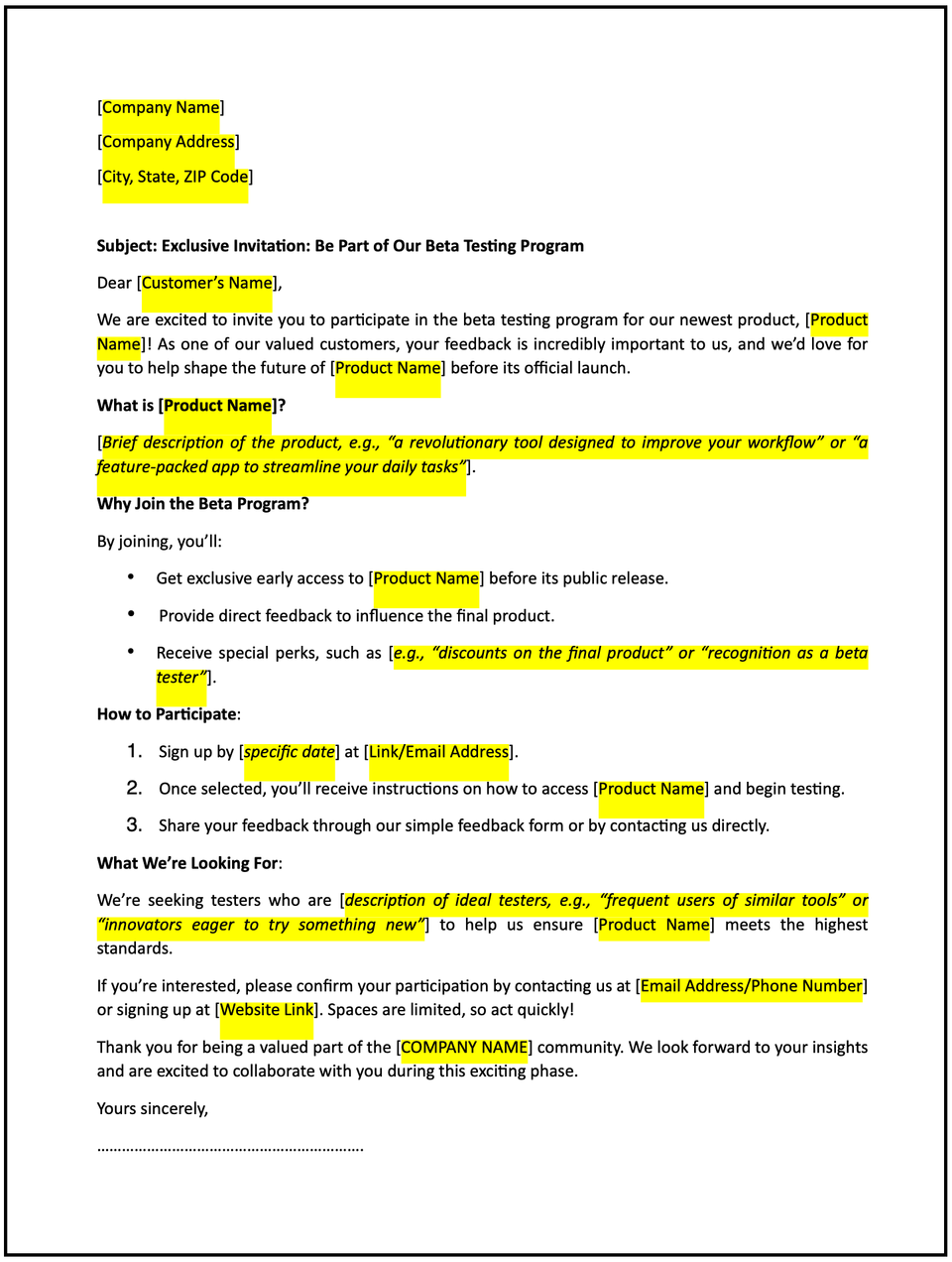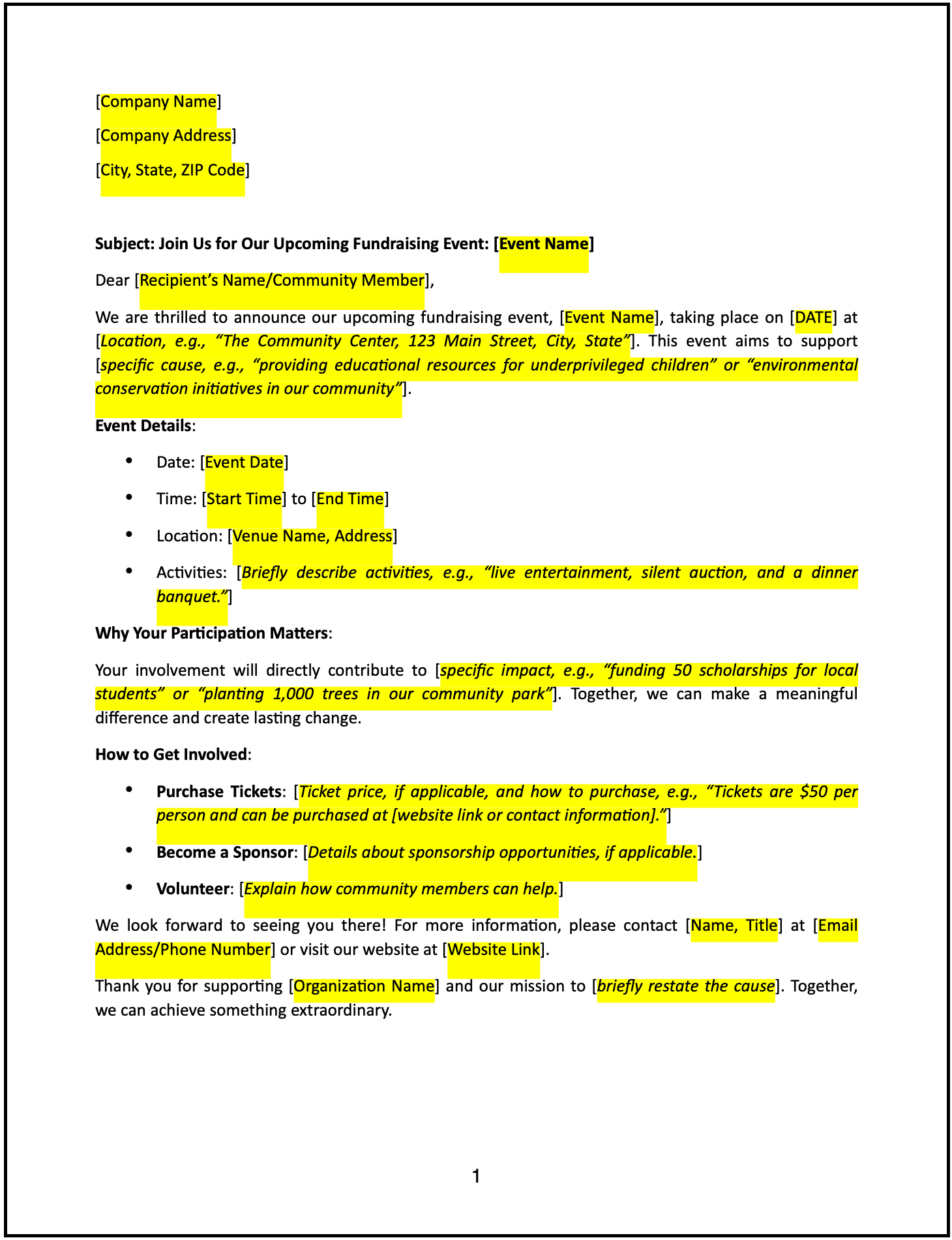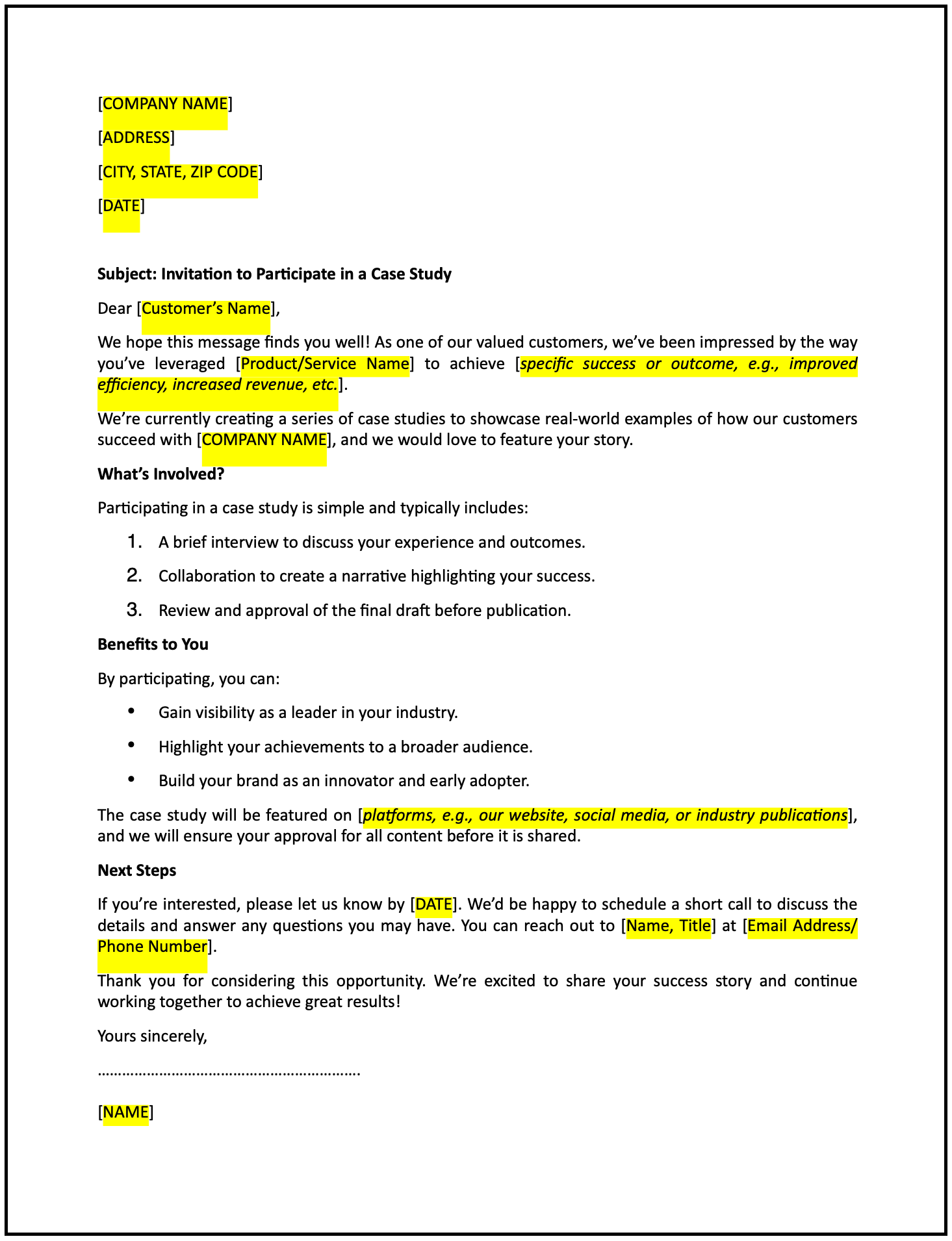Invitation letter to participate in beta testing for new product: Free template

Invitation letter to participate in beta testing for new product
Inviting customers to participate in beta testing for a new product is a great way to gather feedback, build engagement, and foster excitement about your innovation. This letter provides a professional way to extend the invitation, outline the purpose, and explain how they can get involved.
How to use this invitation letter to participate in beta testing for new product
- Start with excitement: Open the letter by expressing enthusiasm about the new product and inviting the recipient to be part of its development.
- Explain the beta testing purpose: Briefly outline the goals of the beta testing phase, such as refining features or gathering user insights.
- Highlight the benefits: Emphasize what the participant will gain, such as early access, the opportunity to shape the product, or other perks.
- Provide participation details: Clearly explain how to sign up, timelines, and expectations for involvement, including the level of feedback required.
- Maintain a professional tone: Ensure the letter is respectful and appreciative, emphasizing the importance of their contribution.
- Request acknowledgment: Encourage the recipient to confirm their interest and share any questions or concerns.
Invitation letter to participate in beta testing for new product template
[INSERT]
Benefits of using an invitation letter to participate in beta testing for new product
This letter template ensures a structured and professional way to invite participants while fostering excitement and collaboration. Here’s how it helps:
- Builds anticipation: Inviting users to beta test creates excitement and interest in the new product.
- Encourages engagement: Personal invitations make participants feel valued and involved in the product’s development.
- Gathers actionable feedback: Engaging users early provides valuable insights to refine the product before launch.
- Strengthens relationships: Collaborating with customers fosters loyalty and a sense of partnership.
- Demonstrates professionalism: A well-crafted invitation reflects your commitment to quality and user experience.
Tips for writing an effective invitation letter to participate in beta testing for new product
- Be specific: Clearly outline the product being tested, the purpose of the beta phase, and expectations for participants.
- Highlight mutual benefits: Emphasize how the recipient’s involvement will shape the product and provide them with value.
- Use professional language: Maintain a respectful and enthusiastic tone to inspire interest.
- Provide clear instructions: Ensure the sign-up process and next steps are straightforward and easy to follow.
- Keep it concise: Focus on the key points and avoid unnecessary details or jargon.
Frequently asked questions (FAQs)
Q: What details should I include in this letter?
A: Include an overview of the product, the purpose of the beta testing, participation details, and the benefits of involvement.
Q: Should I offer incentives for participation?
A: While not required, offering incentives like exclusive access or discounts can increase participation rates.
Q: Who typically receives this letter?
A: Send the letter to engaged customers, early adopters, or users who match your product’s target audience.
Q: How formal should this letter be?
A: The tone can be professional yet approachable and enthusiastic to encourage participation.
Q: When should this letter be sent?
A: Send the letter a few weeks before beta testing begins to allow time for responses and onboarding.
Q: Can this letter include a confidentiality agreement?
A: Yes, if the product is sensitive, including a link to a non-disclosure agreement (NDA) may be necessary.
Q: Is acknowledgment from the recipient required?
A: Yes, requesting confirmation ensures clarity on participation and helps you plan for the beta testing phase.
This article contains general legal information and does not contain legal advice. Cobrief is not a law firm or a substitute for an attorney or law firm. The law is complex and changes often. For legal advice, please ask a lawyer.


